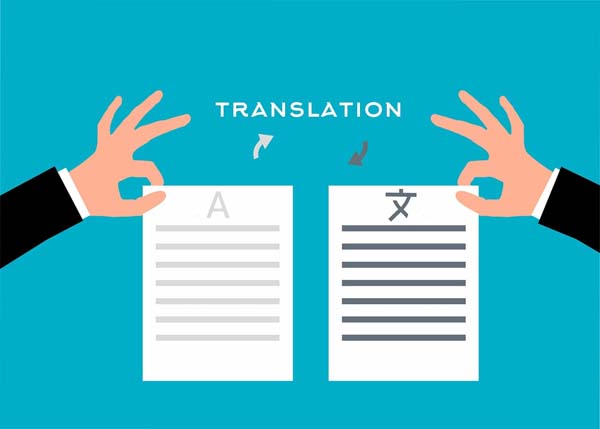In our increasingly interconnected world, where communication transcends geographical and cultural boundaries, the role of language professionals is more crucial than ever. Among these professionals, translators and interpreters stand out as indispensable conduits of cross-cultural understanding and communication. Have you ever marveled at a foreign speaker’s fluency during a live translation, or savored the nuances of a translated book capturing a distant culture? Both feats owe their existence to skilled professionals who bridge the communication gaps between languages. However, while often lumped together, the roles of translator and interpreter differ significantly, demanding distinct skillsets and navigating unique challenges.
What is an interpreter?
An interpreter is a language professional who specializes in facilitating spoken communication between individuals or groups who speak different languages. Interpreters work in real-time, listening to the speaker’s message in one language and conveying it accurately and fluently to the other party/parties in their language. They must possess strong linguistic skills in at least two languages, quick thinking abilities, cultural sensitivity, and excellent communication skills. Interpreters often work in various settings, including conferences, meetings, courtrooms, healthcare facilities, and diplomatic events, where they play a crucial role in enabling effective communication and understanding across language barriers.
What is a translator?
Unlike interpreters, translators work with the written word. They take the intricate threads of written communication in one language and meticulously weave them into a tapestry of equivalent meaning in another. This process demands meticulous attention to detail, thorough understanding of both languages, and the ability to capture the essence of the original text, including its tone, style, and cultural nuances. Translators handle diverse materials, from literary works and legal documents to websites and marketing campaigns
What does a translator do?
A translator is responsible for transferring written text from one language to another while ensuring that the meaning, style, and tone of the original text are preserved as much as possible. Here are some of the primary tasks that a translator typically performs:
- Translating Text: The core responsibility of a translator is to translate written content accurately and fluently from the source language into the target language. This involves understanding the meaning and context of the original text and conveying it effectively in the translated version.
- Cultural Adaptation: Translators must be sensitive to cultural nuances and context, ensuring that the translated text is appropriate for the target audience. They may need to adapt idiomatic expressions, cultural references, and other elements to make the content culturally relevant and understandable to the readers.
- Research: Translators often need to conduct research to ensure the accuracy and completeness of their translations, especially when working with technical or specialized content. This may involve consulting reference materials, dictionaries, and subject matter experts to clarify terminology and concepts.
- Proofreading and Editing: After completing the initial translation, translators review and revise their work to correct any errors, inconsistencies, or inaccuracies. They ensure that the translated text meets quality standards in terms of grammar, punctuation, spelling, and style.
- Specialization: Some translators specialize in specific subject areas or industries, such as literature, law, medicine, technology, or business. Specialization allows translators to develop expertise in particular fields and provide high-quality translations tailored to the needs of clients and readers.
Overall, the primary goal of a translator is to facilitate effective communication across language barriers by producing accurate, culturally appropriate, and linguistically fluent translations that convey the intended message to the target audience.

What does an interpreter do?
While translators work with written text, interpreters deal with spoken language or sign language, facilitating communication in real-time situations. Here’s what an interpreter typically does:
Spoken language interpretation:
- Listening attentively and comprehending: Interpreters need to accurately understand the speaker’s meaning, including cultural references and idioms.
- Simultaneous interpretation: The interpreter speaks almost simultaneously with the speaker, relaying the message instantly in the target language.
- Consecutive interpretation: The interpreter waits for the speaker to finish a sentence or a thought before interpreting it in the target language. This is often used for longer speeches or discussions.
- Maintaining neutrality and confidentiality: Interpreters remain objective and unbiased, and they treat all information confidentially.
- Using appropriate register and tone: Similar to translators, they adapt their interpretation to match the formality, humor, or other stylistic elements of the speaker.
Sign language interpretation:
- Understanding and translating sign language: This requires fluency in both the spoken language and the specific sign language being used.
- Facial expressions and body language: Interpreters convey meaning not just through hand signs, but also through facial expressions and body language.
- Working with different signing styles: Sign languages can vary by region or even community, so interpreters need to adapt to different dialects.
Additional aspects:
- Specialization: Similar to translators, many interpreters specialize in specific fields like healthcare, legal settings, or education.
- Ethical considerations: Interpreters adhere to a code of ethics that emphasizes accuracy, confidentiality, and neutrality.
- Working in various settings: Interpreters can work in diverse environments, from medical appointments to courtrooms to business meetings.
Overall, interpreters play a crucial role in facilitating communication across languages and cultures in real-time situations. They require strong listening skills, fluency in multiple languages, cultural sensitivity, and the ability to think on their feet to ensure clear and accurate understanding.

Similarities between interpreters and translators
Both translators and interpreters require:
- Fluency in multiple languages: Mastering not just vocabulary but also grammar, idioms, and cultural nuances.
- Excellent communication skills: Conveying ideas clearly and concisely while adhering to the style and intent of the original work.
- Strong research and analytical skills: Understanding the subject matter and context to deliver accurate and meaningful translations.
- Ability to work independently and meet deadlines: Both professions demand self-discipline and time management skills.
Differences between interpreters and translators
- Medium: Translators work with written text, while interpreters work with spoken language.
- Pace: Translations are completed over time, while interpretations occur in real-time, demanding quicker thinking and improvisation.
- Focus: Translators prioritize accuracy and cultural adaptation, while interpreters prioritize clarity and immediacy.
- Tools: Translators may use translation software and resources, while interpreters rely primarily on their language skills and cultural understanding.
Impact and Importance
Both interpreters and translators play crucial roles in our globalized world. They:
- Facilitate communication and understanding: Breaking down language barriers in business, diplomacy, healthcare, education, and other vital sectors.
- Promote cultural exchange and understanding: Fostering respect and appreciation for diverse perspectives and traditions.
- Ensure equal access to information and opportunities: By making information and services accessible to all, regardless of language spoken.
Optional additional sections
Challenges Faced by Interpreters and Translators:
- Ethics and confidentiality: Maintaining neutrality and accuracy while balancing cultural sensitivity and potential conflicts of interest.
- Mental and emotional strain: High pressure environments, fast-paced interpreting, and exposure to sensitive topics can lead to stress and burnout.
- Technology’s impact: While tools can assist, overreliance can reduce skill development and human judgment. Ethical considerations in using machine translation also arise.
- Job security and fair compensation: Freelance interpreters can face inconsistent work and undervaluing, while navigating complex certification processes.
- Lack of awareness and appreciation: The public may not fully understand the complexities and skills involved in these professions, leading to undervaluing their contributions.
Future Trends in Interpreting and Translation:
- Machine translation advancements: Refining AI, integrating human expertise, and ensuring ethical use within specific domains.
- Remote interpreting and globalization: Increased demand for virtual interpreting services due to technology and dispersed workforces.
- Specialization and niche markets: Focus on specific industries, fields, and cultural expertise.
- Community interpreting and advocacy: Growing need for interpreting services in healthcare, education, and legal settings for diverse communities.
- Continuous learning and adaptation: Keeping up with technological changes, evolving terminology, and cultural nuances.
Personal Experiences or Anecdotes:
- A doctor shares how an interpreter facilitated a life-saving surgery by accurately conveying their instructions to a non-English speaking patient.
- A refugee recounts how an interpreter helped them navigate the legal system and access essential services in a new country.
- A business owner describes how a translator enabled them to close a major deal with a foreign partner, overcoming language barriers and cultural differences.
These are just a few examples, and feel free to share your own experiences or stories that highlight the importance of these professions. By sharing such experiences, we can raise awareness and appreciation for the vital role interpreters and translators play in our increasingly interconnected world.
By understanding the distinct roles of interpreters and translators, we can appreciate their unique contributions to a more connected and inclusive world. Let us celebrate their expertise and the bridges they build across languages and cultures, one word at a time.
If you have interpreting and translation needs, you are welcome to contact us and we will get you a free quote


